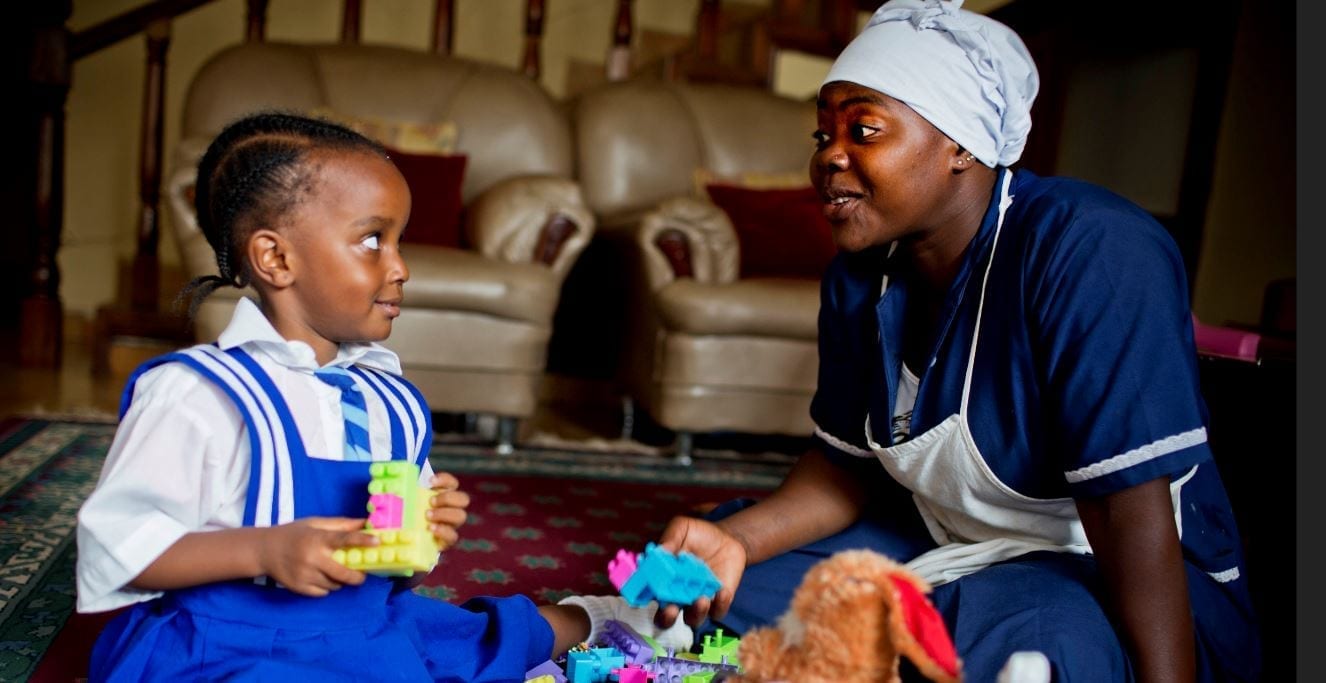
Jun 15, 2018
Domestic workers are at the forefront of change in many countries, highlighted by the adoption of the Decent Work for Domestic Workers convention by the International Labor Organization, and the creation of the International Domestic Workers Federation. Yet this International Domestic Workers Day, 60 million of the estimated 67 million domestic workers do not enjoy social protections attainable through unions and worker associations.
Through our work in countries around the world, domestic workers have told us about their long working hours and poverty wages. Many have been subjected to violence and sexual abuse. Meanwhile, migrant domestic workers—who often leave behind their own children to care for others—try to support their families in countries where they do not speak the language and have little access to justice, if they are physically or otherwise abused.
On June 16, International Domestic Workers Day, we honor the women who make other people’s lives easier. This day, as every day, the Solidarity Center is committed to helping domestic workers attain safe and healthy workplaces, family-supporting wages, dignity on the job and greater equity at work and in their community.
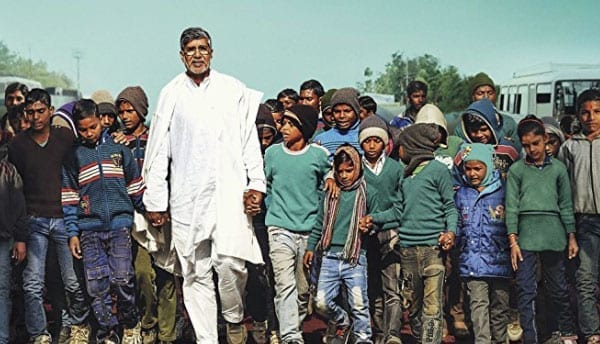
Jun 13, 2018
“I have one single mission: Every child should be free to be a child.”
Nobel Prize winner Kailash Satyarthi proclaimed this ambitious mission in the new documentary, Kailash, which depicts the fight to end child labor through the Global March Against Child Labor and Bachpan Bachao Andolan (BBA), the organizations Satyarthi founded.
In 1994, 150 child labor advocates marched through the southern tip of India chanting, “No more tools in tiny hands. We want books, we want toys,” marking the beginning of a revolution to end child labor. Four years later, Satyarthi and other child labor advocates founded the Global March.
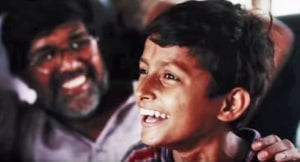
Tens of thousands of children in child labor have been rescued through organizations founded by Nobel winner Kailash Satyarthi. Courtesy: “Kailash”
“We were led by young people, many of whom were child laborers,” said Anjali Kochar, executive director of the Kailash Satyarthi Children’s Foundation. Kochar spoke at the U.S. Department of Labor, one of several locations in Washington, D.C., where the documentary was screened to commemorate 2018 World Day Against Child Labor on Tuesday.
“They demanded their right to childhood,” said Kochar, recalling the march. “They called for the elimination of child labor and for meaningful, quality education. It was truly electrifying.”
Satyarthi began rescuing child laborers in the 1980s. His first rescue attempt was unsuccessful because he was outgunned by human traffickers. Satyarthi then brought to court photos of the atrocities he saw when trying to rescue the children, and a judge then ordered they all be freed.
The more children rescued, the bigger the mission became until more than 200 activists, lawyers and social workers joined Satyarthi in the 1980s to form the BBA, an India-based organization that has rescued more than 80,000 child laborers. Mukti Ashram, the Delhi branch of BBA, provides shelter and education for liberated children.
Demand for Cheap Products Increases Demand for Child Labor
Satyarthi looked at the successes of Mahatma Gandhi, Nelson Mandela, and Martin Luther King Jr. and decided that a “global march” was best for bringing attention to a global problem. The increased demand for cheap products was leading to an increased demand in cheap labor, making abuse and wage theft common in supply chains, especially for women and children. Since The Global March Against Child Labor formed in 1998, the International Labor Organization (ILO) passed Convention 182 on elimination of the worst forms of child labor, child labor in homes was banned in India in 2006 and the South Asian March Against Child Trafficking took place in 2007, where 1 million people marched 3,000 miles to end forced labor.
Although the efforts of Satyarthi, who won the Nobel Prize in 2014 for his efforts, and other global advocates decreased the number of child laborers from 260 million to 152 million in 20 years, there is still more work to be done. Of the 152 million child laborers, 73 million work in hazardous conditions. These children are between the ages of 5 and 17, spending their days in factories and fields instead of in school.
The film reveals the complexity of child labor, illustrating how poverty and education often underly child labor. Parents who are paid very little or are unemployed may need their children to work so their families can survive. Because of the lack of resources, impoverished parents are often uneducated and their children fall prey to traffickers promising work opportunities. The children are taken from their families and forced to work for months or years, escaping with burns and broken bones. This was the case for Sanjeet, who appeared in the film and was rescued by BBA. This young boy was found with dents in his face from hot powder blown by fans in a factory. He had not been allowed to go home in a year.
Acknowledging prior accomplishments as well as the work ahead, Satyarthi created the 100 Million Campaign in 2016, which seeks to mobilize 100 million young people to fight for 100 million child laborers. This program will not only benefit the children still suffering under forced labor but will provide a legacy so that future generations can continue to tackle this issue.
“We all have to work to globalize compassion,” says Satyarthi when discussing how movements make change. “Every child has the right to bread, education, love and play.”
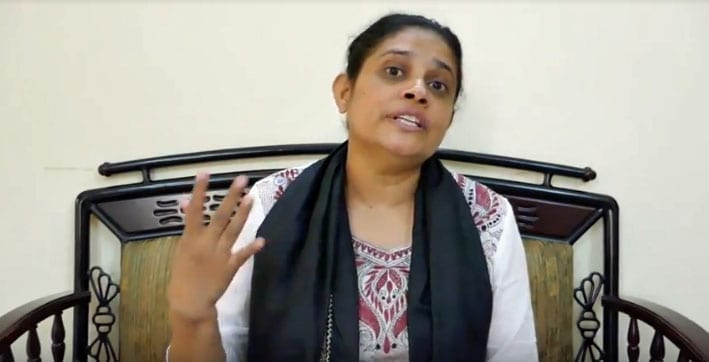
Jun 12, 2018
Bangladesh garment worker and union leader Nazma Akter is among women challenging obstacles to leadership in their unions, their workplaces and their communities.
Founder and president of the AWAJ Foundation and Sommilito Garments Sramik Federation, Nazma says “Women in Bangladesh, especially at the grassroots, are taking the initiative for leadership and we hope it will be more and more.”
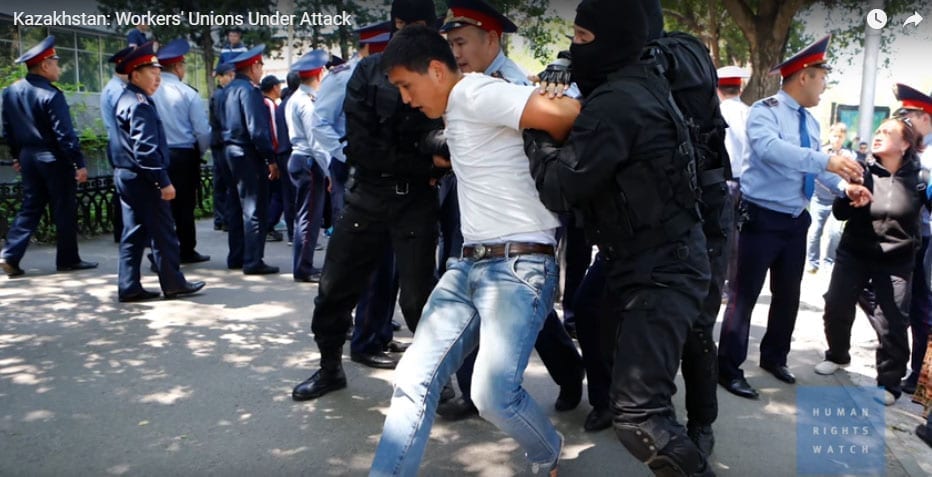
Jun 7, 2018
Some 65 percent of countries now exclude entire categories of workers from labor law protections, while 81 percent of countries deny some or all workers collective bargaining, as democratic space for workers closes around the world, according to a new report.
Released today, the International Trade Union Confederation (ITUC) Global Rights Index 2018 reports that over the past year, trade unionists were murdered in nine countries—Brazil, China, Colombia, Guatemala, Guinea, Mexico, Niger, Nigeria and Tanzania—as the number of countries in which workers are exposed to physical violence and threats increased by 10 percent, from 59 to 65. In Colombia alone, 19 trade unionists were murdered last year—nearly double the 11 murders of the previous year.
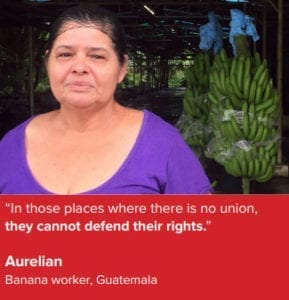 The number of countries where workers are arbitrarily arrested and detained increased from 44 in 2016 to 59 in 2017. Some 87 percent of countries violated the right to strike. Of 142 countries surveyed, 54 deny or constrain free speech and freedom of assembly.
The number of countries where workers are arbitrarily arrested and detained increased from 44 in 2016 to 59 in 2017. Some 87 percent of countries violated the right to strike. Of 142 countries surveyed, 54 deny or constrain free speech and freedom of assembly.
The 10 worst countries for overall worker rights violations are Algeria, Bangladesh, Cambodia, Colombia, Egypt, Guatemala, Kazakhstan, the Philippines, Saudi Arabia and Turkey.
“Democracy is under attack in countries that fail to guarantee people’s right to organize, speak out and take action,” says ITUC General Secretary Sharan Burrow.
The Middle East and North Africa was again the worst region for treatment of workers, with the kafala system in the Gulf still enslaving millions of people. “The absolute denial of basic workers’ rights remained in place in Saudi Arabia,” according to the ITUC.
Haiti, Kenya, Macedonia, Mauritania and Spain have all seen their rankings worsen in 2018, with a rise in attacks on worker rights in law and practice.
The 2018 ITUC Global Rights Index rates 142 countries from one to five according to 97 internationally recognized indicators to assess where worker rights are best protected in law and in practice. The Index assigns an overall score placing countries in rankings of one to five.
1 Sporadic violations of rights: 13 countries, including Ireland and Denmark
2 Repeated violations of rights: 23 countries, including France and Estonia
3 Regular violations of rights: 26 countries, including Spain and Macedonia
4 Systematic violations of rights: 38 countries, including Haiti and Kenya
5 No guarantee of rights: 32 countries including, Honduras and Nigeria
5+ No guarantee of rights due to breakdown of the rule of law: 10 countries
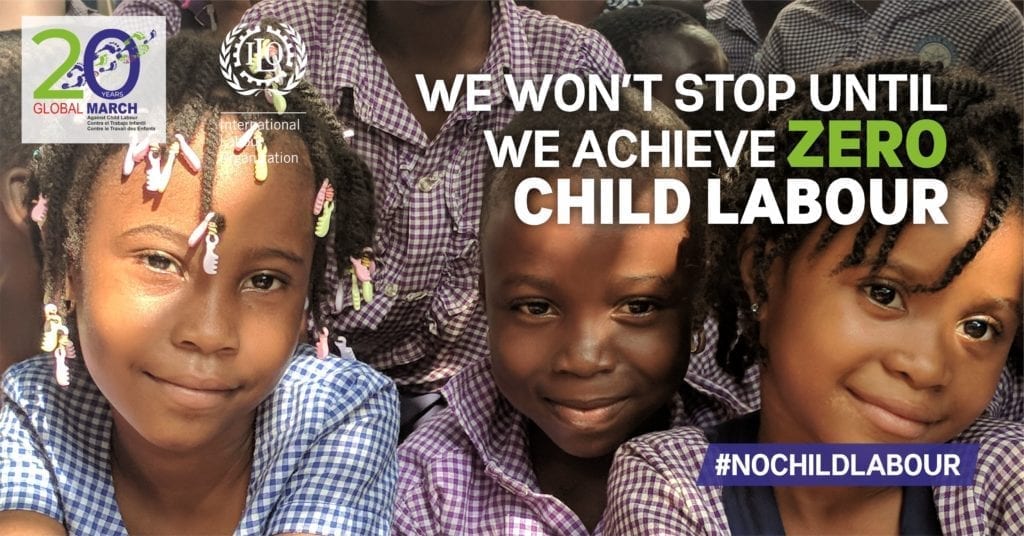
Jun 6, 2018
On a warm, dusty day on the Deccan plateau in April 1994, I joined Kailash Satyarthi’s Bharat Yatra, (Indian Journey), a group of 150 child labor activists part-way through its march from the southern tip of India to the heart of New Delhi, where it would arrive five months later. I didn’t realize it then, but I was witnessing the prototype of the movement that Kailash would take to a global scale four years later, and result in the biggest single step forward in history in the cause to abolish child labor.
It was hard to visualize 24 years ago that these initial attempts to mobilize masses of people behind a broad social movement would build to this moment today—a 20th anniversary commemoration at the International Labor Organization’s (ILO) annual Conference in Geneva of the Global March, which ushered in ILO Convention 182 aimed at eliminating the worst forms of child labor.
ILO conventions set a global standard for labor rights that UN member countries are expected to adopt and enforce. Not all countries are willing to do so. But Convention 182 is now the most ratified convention in ILO history, with 181 signatory countries. As one diplomatic observer in the early 1990s said to me, looking at the burgeoning activity in India, “Kailash has built a movement—now he needs to build an organization.”
Build one he did. The Global March Against Child Labour was formed 20 years ago specifically to mobilize people worldwide to lobby for adoption of Convention 182. And finally recognizing his decades-long campaign to abolish child labor, the Nobel Committee awarded Kailash the Peace Prize in 2014.
At the commemoration this week, attended by hundreds of delegates from governments, employers and trade unions, Kailash was joined by ILO Director General, Guy Ryder, representatives of workers’ and employers’ groups, and two very special guests: Basu Rai, a former child laborer who, as a 9-year-old, was one of the original marchers who came to Geneva 20 years ago, and Zulema Lopez, a former child farm worker in the United States, who is now earning a university student.
Opening the program, Ryder noted to Kailash, “I personally remember the moment, the incredible moment 20 years ago, when you led children from around the world into the ILC to press for Convention 182.” He pointed out that even though child labor has been reduced by tens of millions since that time, 152 million children are still working, with practically no reduction in the 5–11 year age range. Indeed, hazardous child labor for that age cohort has actually increased. With the number of children injured and killed each year in hazardous labor conditions, Ryder said, “If this were a war, we’d be talking a lot more about it.”
Basu, in an impassioned address, talked about how he was orphaned at 4, joined a street gang and became a child slave before being rescued by Kailash and his activists. “I remember coming here 20 years ago and climbing on the desks and raising the slogan, ‘No more tools for tiny hands, we want books, we want toys.’ My childhood was snatched away. I’m coming here today, but I’m still afraid. I’m still afraid—and I’m a father to a 2-month-old daughter—that the world is not safe for the children.”
Zulema told the assembly: “I was a third-generation farm worker family. I first went to work in the fields when I was 7. I missed school. It was normal for me to wake up at 5:30 in the morning, put on a T-shirt, and work for hours in the hot sun, my back aching from carrying 30 pounds of cucumbers.”
In winding up the event, Kailash reminisced, “I remember that day when I walked in with the core marchers of the Global March who were allowed to come into the ILO, which was the first time in history the ILO opened its doors to the most exploited and most vulnerable… We were marching from exploitation to education.”
While there has been progress, much work needs to be done to eliminate child labor, as envisioned by the UN-adopted Sustainable Development Goals, by 2025.
“Child labor is not an issue that will be solved by someone else; it’s up to you personally,” said Kailash. “It’s urgent. The childhood of children today can’t wait. And you have to believe it’s possible. It’s personal, it’s urgent, it’s possible.”
Timothy Ryan is the Chairperson of the Global March Against Child Labour and the Asia Regional Director for the Solidarity Center.






 The number of countries where workers are arbitrarily arrested and detained increased from 44 in 2016 to 59 in 2017. Some 87 percent of countries violated the right to strike. Of 142 countries surveyed, 54 deny or constrain free speech and freedom of assembly.
The number of countries where workers are arbitrarily arrested and detained increased from 44 in 2016 to 59 in 2017. Some 87 percent of countries violated the right to strike. Of 142 countries surveyed, 54 deny or constrain free speech and freedom of assembly.